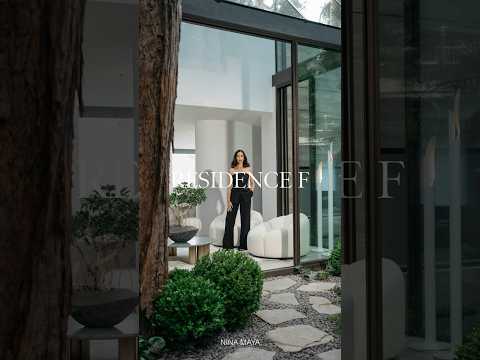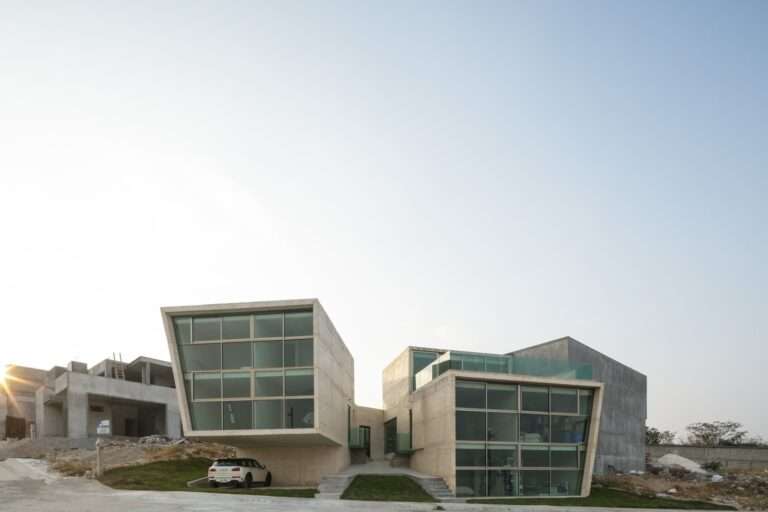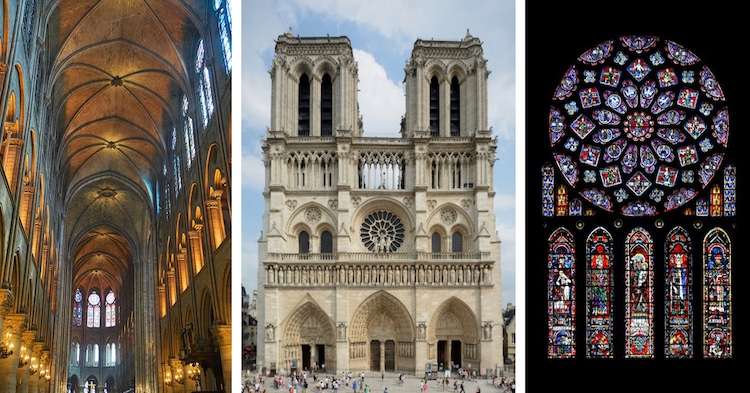
Aesthetically ornate and conceptually transcendent, the Gothic style has become one of the world’s most distinctive architectural movements. Though it originated in the Middle Ages, the one-of-a-kind genre continues to captivate today, as evident in some of Europe’s most beautiful buildings.
While the Gothic approach appears to be a novel form of architecture, its signature style has been shaped by different influences. Here, we explore the genre, looking closely at its rich history, defining features, and most well-known examples.
What is Gothic Architecture?
Gothic architecture is a European style of architecture that values height and exhibits an intricate and delicate aesthetic. Though its roots are French, the Gothic approach can be found in churches, cathedrals, and other similar buildings in Europe and beyond.
History
During the Middle Ages, a new style of architecture emerged in Europe. Initially referred to as Opus Francigenum, or “French Work,” this architectural genre dominated European tastes—namely, that of the Roman Catholic Church—until the Renaissance, when Italian writers created the word we know as “Gothic.”
The Gothic style evolved from Romanesque architecture, a medieval aesthetic characterized by arches, vaulted ceilings, and small stained glass windows.
Gothic architecture adopted and adapted these Romanesque elements to produce a new style of building that featured exaggerated arches, increased vaulting, and enlarged windows. In addition to reinterpreting these characteristics, however, Gothic architecture also abandoned one key feature of Romanesque architecture: thick walls. To construct taller, more delicate buildings with thinner walls, Gothic architects employed flying buttresses for support. These stone structures allowed architects to create sky-high cathedrals and churches that evoked ethereality and reached toward the heavens.
Classic Elements


Photo: Adrian Farwell via Wikimedia Commons (CC BY 3.0)
While the Gothic style can vary according to location, age, and type of building, it is often characterized by 5 key architectural elements: large stained glass windows, pointed arches, rib vaults, flying buttresses, and ornate decoration.
Large Stained Glass Windows
While stained glass windows are found in many places of worship, they are particularly prevalent in Gothic cathedrals. Featuring meticulously cut colored glass, these kaleidoscopic windows—which are typically either tall and arched ‘lancet’ windows or round ‘rose’ windows—are larger than those found in other types of churches. This allowed them to let in as much natural light as possible.


Photo: Jean-Christophe BENOIST via Wikimedia Commons (CC BY 3.0)
Gothic stained glass windows also frequently feature tracery, a decorative type of stone support, and detailed scenes from Biblical stories.
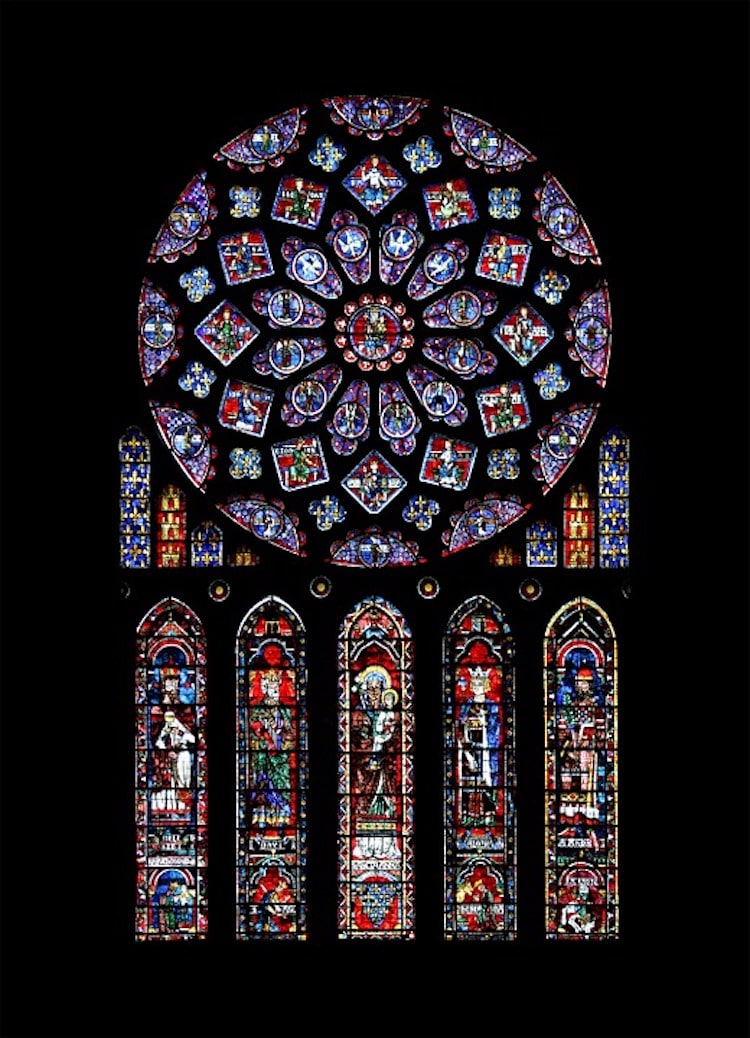
Photo: WikiImages
Pointed Arches
A primary feature of many religious structures, ample archways can be found in most Gothic churches and cathedrals. Rather than the wide, rounded arches characteristic of Romanesque buildings, however, architects working in the Gothic style adapted the tall, thin pointed arches found in Islamic architecture.
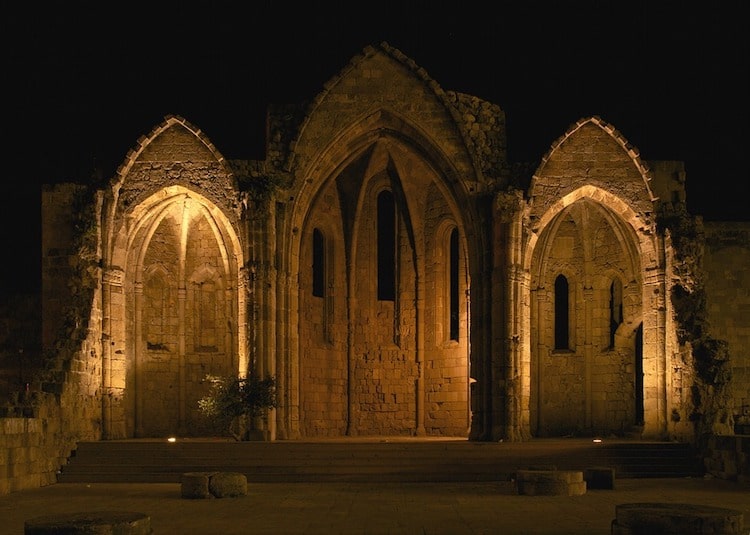
Photo: WikiImages
This silhouette accentuated each cathedral’s height, symbolically pointed toward the sky and accommodated similarly-shaped vaulting.
Rib Vaults
To incorporate higher ceilings and taller windows into their designs, Gothic architects utilized a new method of structural support called rib vaulting. Typically covering the nave of a church, rib vaulting involves the use of intersecting barrel vaults—arches placed parallel to one another to support a rounded roof.
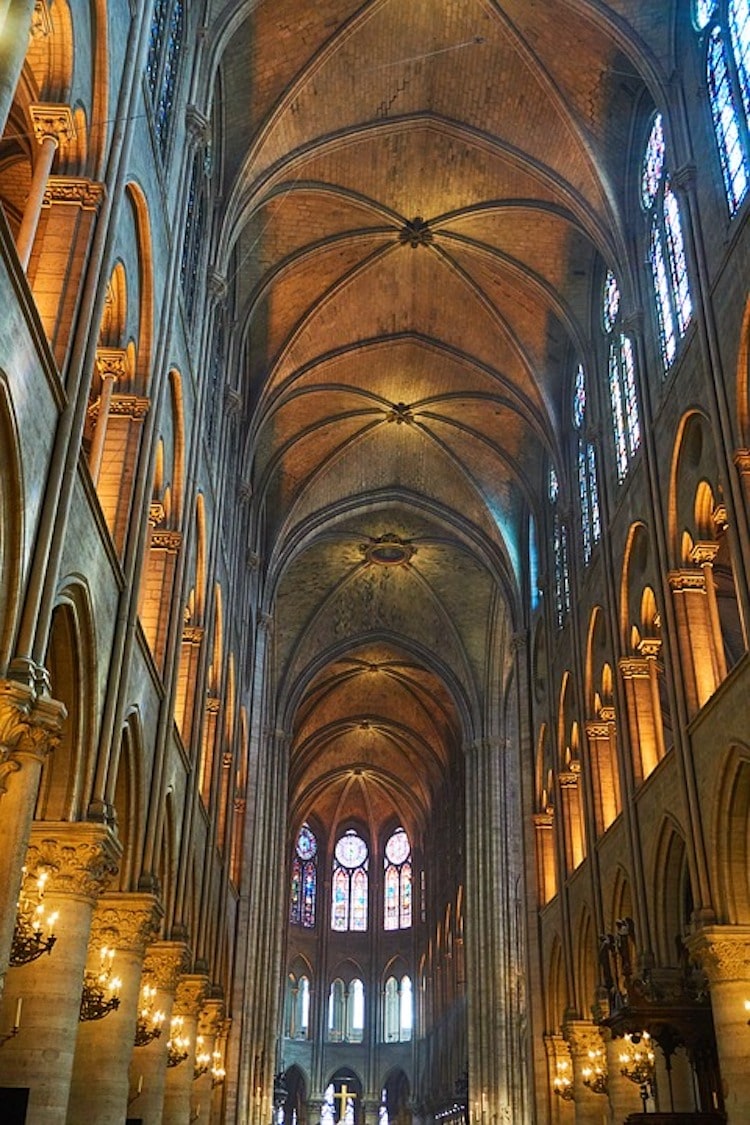
Photo: NakNakNak
In addition to showcasing a more decorative aesthetic than traditional barrel vaults, these crisscrossed constructions offer increased support for the sky-high buildings.
Flying Buttresses
On top of these advanced vaulting techniques, Gothic architects employed another unique method of structural support: flying buttresses. These projecting stone structures reinforced the buildings by redistributing the weight of the heavy roof to a lower, more solid level.
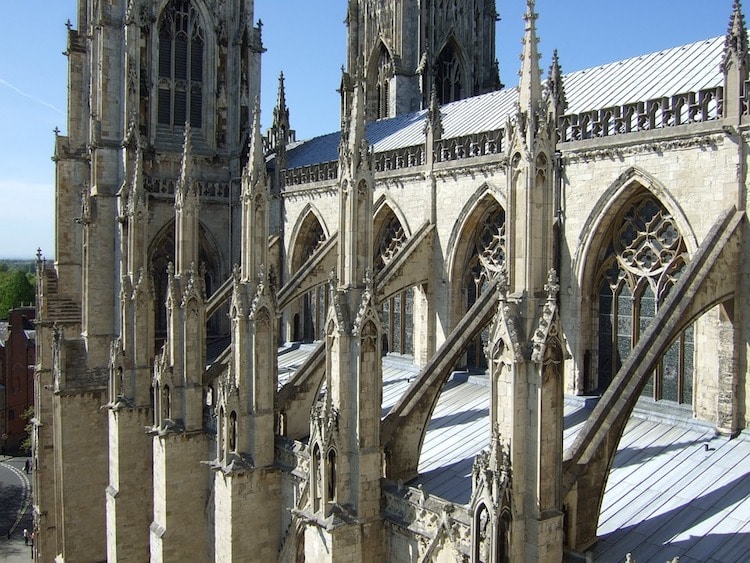
Photo: Rodney Bamford
Flying buttresses ensured the cathedrals’ integrity so that architects did not need to sacrifice the thin walls and large windows distinctive of the Gothic style.
Ornate Decoration
A final feature found in Gothic architecture is the presence of ornate decorative elements. These include embellished colonnades and colonettes, sculptural moldings, statues of saints and historical figures, pinnacles and spires, and gargoyles, grotesque figures that double as water spouts.
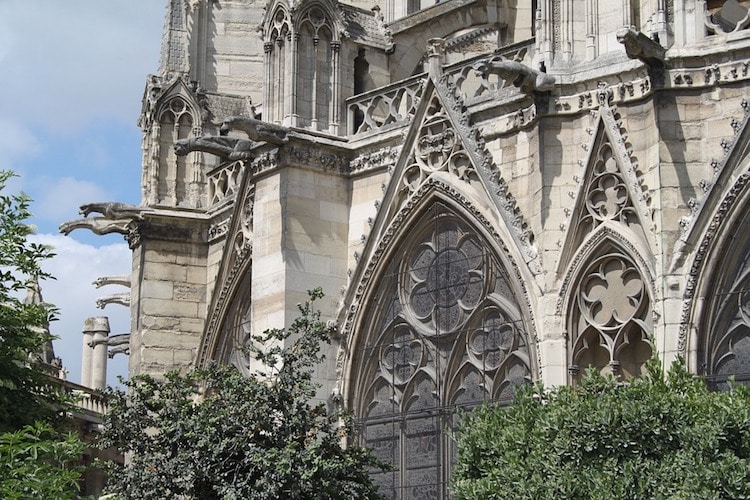
Photo: pixajopari
Notable Buildings Built in the Gothic Style
Gothic buildings can be found in cities all over France and across Europe. Notable sites in France are Paris’ Notre-Dame Cathedral, Chartres Cathedral, the Basilica of Saint-Denis, Amiens Cathedral, and Reims Cathedral.
Basilica of Saint-Denis
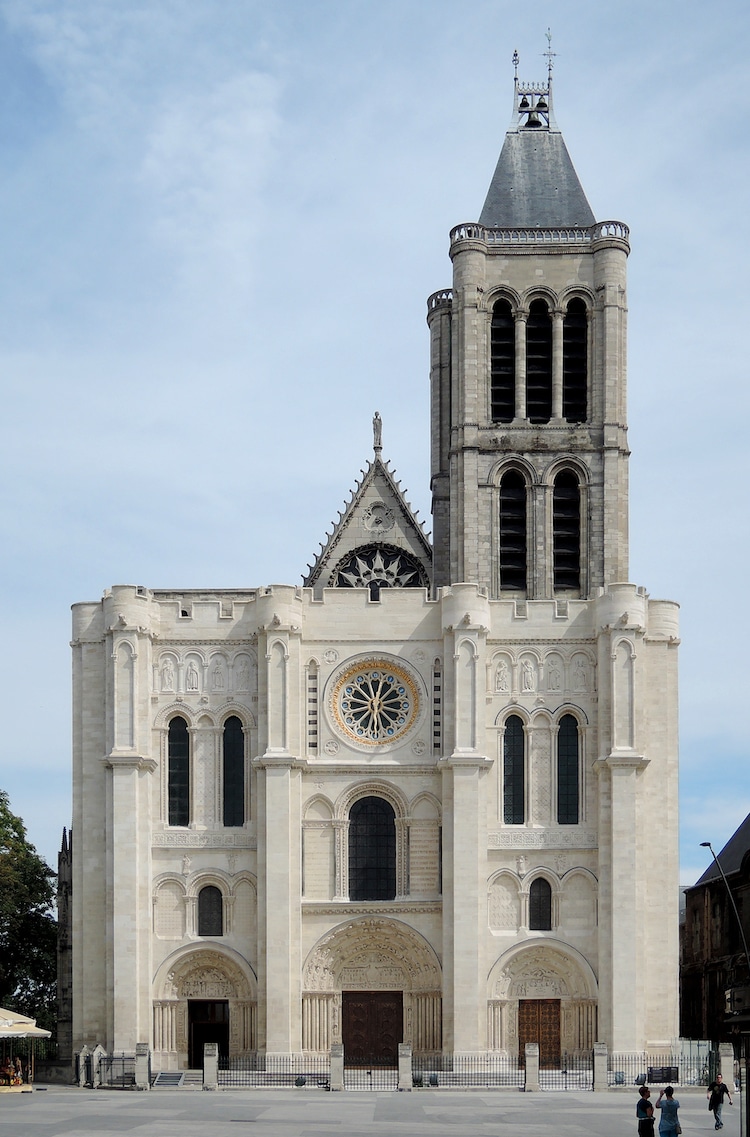
Photo: Thomas Clouet via Wikimedia Commons (CC BY-SA 4.0)
This medieval abbey church underwent a dramatic transformation that helped define Gothic architecture. Under the watchful eye of Abbot Suger, portions of the church were rebuilt in the mid-12th century. This included the west façade, where the old building was demolished to make way for a new, innovative piece of architecture that used cutting-edge techniques.
Vertical buttresses divided up the façade, while large window arches allowed for ornate sculptural decoration. This was a huge departure from Romanesque façades and is the reason why Saint-Denis is known as the first Gothic building.
Notre-Dame de Paris
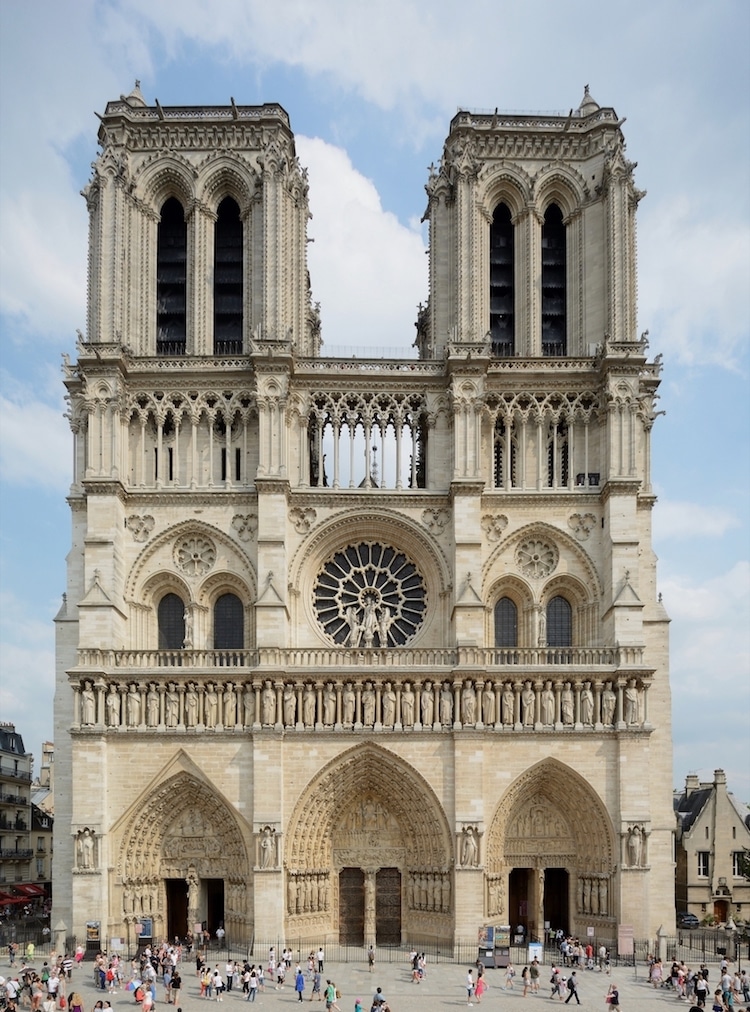
Photo: Peter Haas via Wikimedia Commons (CC BY-SA 3.0)
When most people think of Gothic architecture, Notre Dame is the first church that comes to mind. From its enormous rose windows to its flying buttresses and gargoyles, the cathedral exemplifies the Gothic style at its finest. Construction on the church began in 1163 and its plans were influenced by the revolutionary new architecture seen in Saint-Denis.
It was mostly completed by 1260 after flying buttresses were added to support the weight of the roof. Renovations and reconstruction have continued throughout the history of the church, which is one of Paris’ most visited sites. An unfortunate fire in 2019 destroyed the spire and much of the roof. Reconstruction is ongoing with the building now having been secured. Officials announced that the church is set to reopen to the public on December 8, 2024. The restoration period is scheduled to end on June 8, 2025, enabling the church to be fully prepared in time for the Feast of Pentecost.
Chartres Cathedral
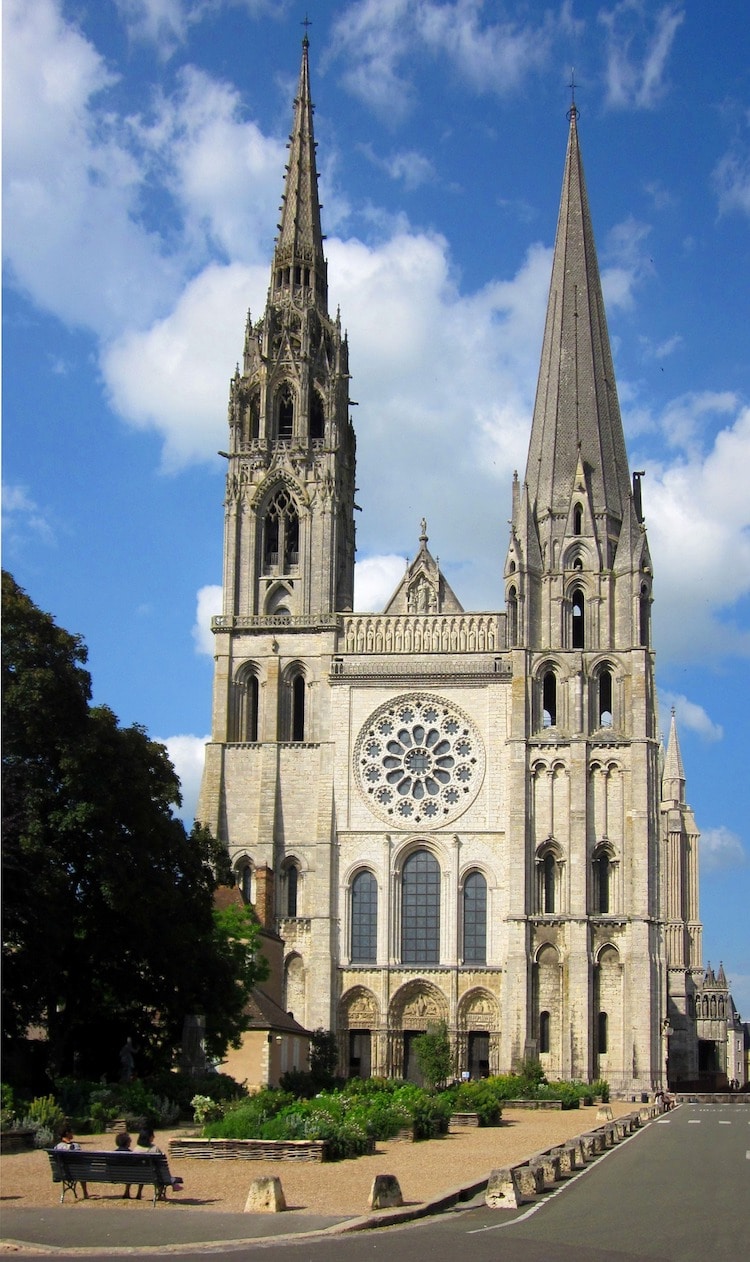
Photo: guy_dugas
Due to the many fires that ravaged the building, Chartres Cathedral is an interesting mix of early and late Gothic. For instance, on the north façade, the right spire was created in a plainer, early Gothic style that contrasts heavily with the left spire built in the 16th century. That spire was created in a Flamboyant style, complete with ornate bar tracery and extra sculpture. Chartres has three façades which are filled with hundreds of sculptures that tell biblical narratives.
The Cathedral was spared both during the French Revolution and World War II thanks to the intervention of townspeople and an American colonel who pushed back against orders to destroy it.
Reims Cathedral
A beautiful example of the High Gothic, the current iteration of Reims Cathedral was built when a fire destroyed the early Gothic structure. In its place went a church that took Gothic to its limits. The west façade has incredibly deep portals that allow for a complex sculptural program. This sculpture would have allowed illiterate churchgoers to visually see what they were unable to read. Above the central portal is a large rose window with thin tracery. The level above the rose window is reserved for the Gallery of Kings, which is made up of 56 statues that stand 15 feet high. The interior has innovative four-part rib vaults that allow for a more uniform appearance while increasing the height.
While Reims Cathedral was largely spared during the French Revolution, it underwent extensive damage in World War I after occupying German troops used it to house their wounded soldiers. Costly renovations in the 20th century have restored it to its former glory.
Amiens Cathedral
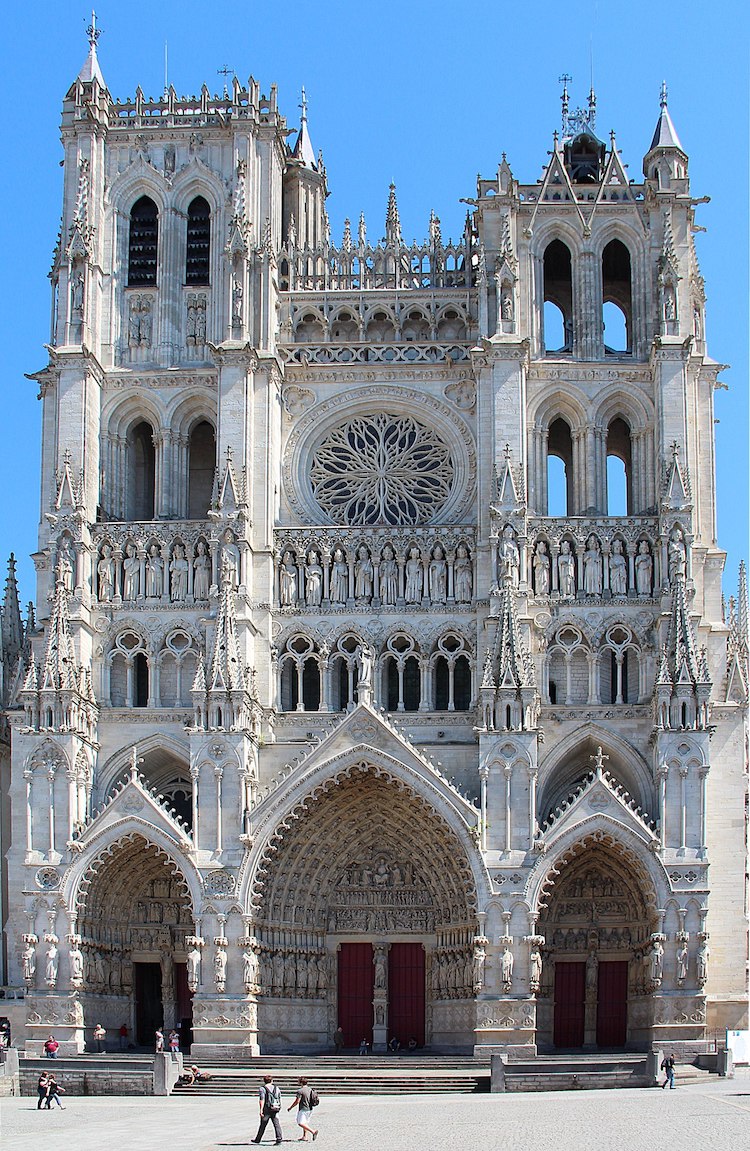
Photo: Jean-Pol GRANDMONT via Wikimedia Commons (CC BY 3.0)
Built over the course of just 50 years—a relatively short time in Gothic architecture—the Amiens Cathedral is a wonderful example of the High Gothic. It represents the apex of trying to reach for the heavens and stands as France’s largest cathedral. To put things in perspective, two Notre Dame Cathedrals could fit inside Amiens.
Construction began in 1220 after a fire destroyed the earlier Romanesque cathedral. The church is particularly known for the quality of its sculpture on the main façade.
Gothic Architecture in Europe
The Gothic style wasn’t limited to just France. This type of ornate architecture spread across Europe, finding a foothold in Italy, Germany, Spain, and England. Though each country gave the style its own twist, international Gothic still retains the basic elements found in France.
Milan Cathedral
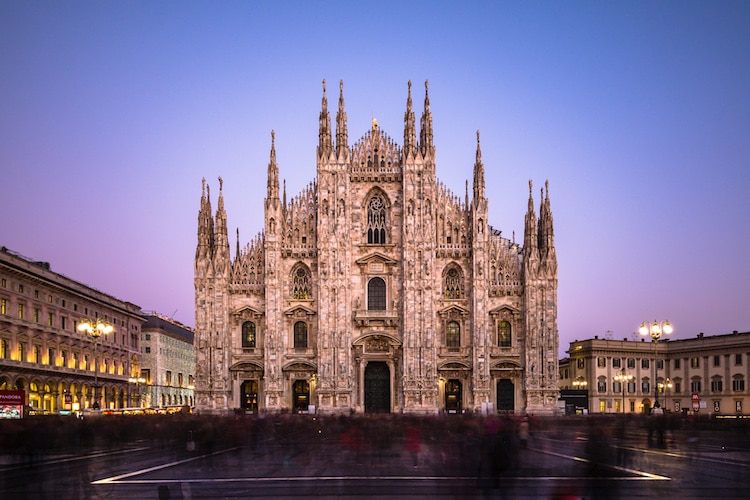
Photo: Marco Nürnberger via Wikimedia Commons (CC BY 2.0)
The long history of the Milan Cathedral spans nearly 600 years, with construction beginning in 1386 and finishing in 1965. It’s a wonderful example of how Gothic architecture transformed outside of France. The building is most well-known for its façade, which has over 90 gargoyles, 135 spires, and about 3,400 sculptures.
Westminster Abbey
London’s iconic Westminster Abbey took its current form under the eye of Henry III. He initiated construction in 1245 and had the abbey church built in an Anglo-French Gothic style. It includes all of the classic Gothic features, including flying buttresses, rib vaults, rose windows, and pointed arches.
The church, which has been the home to every English and British monarch since 1066 continues to play a culturally significant role in Britain.
St. Stephen’s Cathedral
Located in Vienna, St. Stephen’s Cathedral is a combination of Romanesque and Gothic styles. It features an impressive spire that dominates the skyline, but is most well-known for its colorful roof. Covered in 230,000 glazed tiles, the roof has a zig-zag pattern and a mosaic of a double-headed eagle. The cathedral also has 22 bells, 18 altars, and a massive stone pulpit that is a fine example of Gothic sculpture.
Seville Cathedral
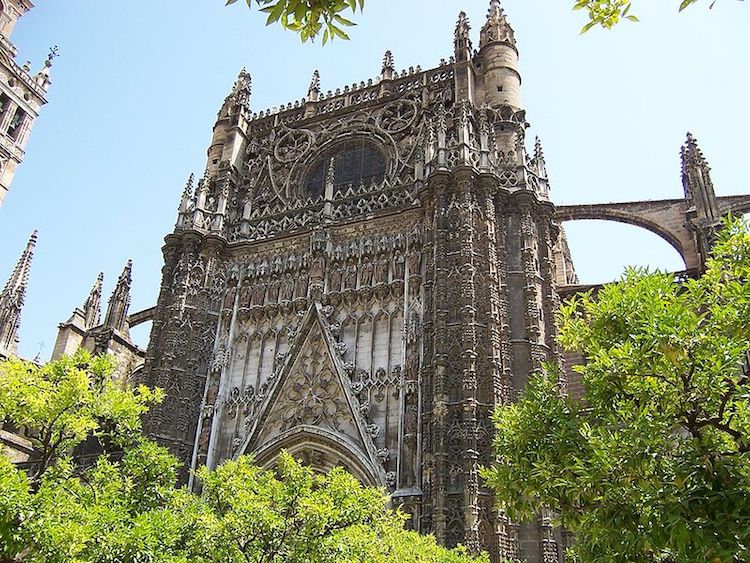
Photo: Dubaduba~commonswiki via Wikimedia Commons (GNU Free Documentation License)
Spain’s Seville Cathedral is not only the largest Gothic church in the world but the largest cathedral in the world. Completed in the early 16th century, it’s known for its immense size, ornate tracery stonework, and the use of a former mosque minaret as a bell tower.
Legacy
As both beautiful examples of age-old architecture and places of worship, many Gothic cathedrals remain popular destinations for tourists and pilgrims alike.
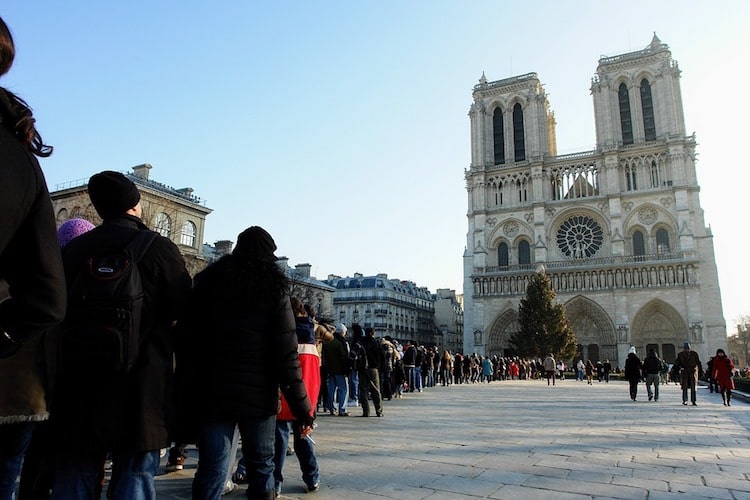
Photo: 3dman_eu
Additionally, given the spaciousness and captivating aesthetic of these buildings, many contemporary artists utilize Gothic cathedrals as the sites for their work, including projection art, multimedia installations, and interactive light shows.
This article has been edited and updated.
Related Articles:
Towering Photographs Highlight Stunning Intricacy of Gothic Architecture
16th Century Gothic Boxwood Miniatures With Extremely Detailed Carvings
Magnificent Art Nouveau Architecture of the Great Antoni Gaudí

